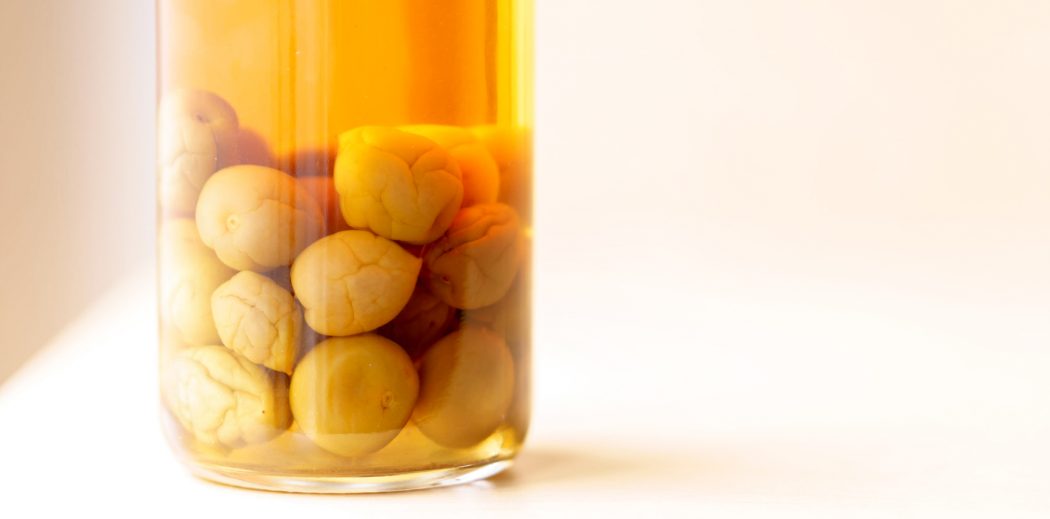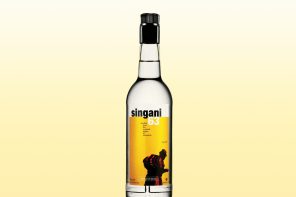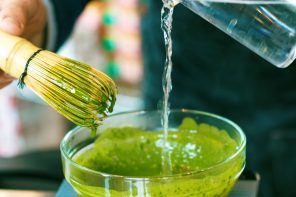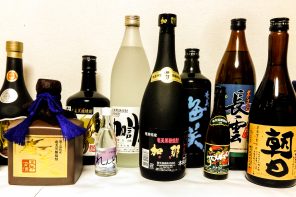Earlier, we went over why sake — while a beloved staple — shouldn’t steal the spotlight from shochu, another hotshot Japanese liquor. But to start writing about the country’s alcohol is to delve into a vast, varied world with a history as rich as it is boozy. Umeshu is a classic Japanese drink that’s making its way onto menus around the globe.
Technically, umeshu translates to “plum wine,” though that’s not completely accurate. First of all, it’s not a wine. Second, “ume” refers to Prunus Mume, a type of tree that is also known as the Chinese Plum or the Japanese Apricot — the best way to describe its fruit would be as a cross between the two. The produce it yields appears in juices, sauces and as pickles or an ingredient in traditional medicine. Alcohol kind of counts as a medicine, too, right?
As a liquor, it falls on the sweet side, though that’s not due to the fruit: extra sugar is added to offset the ume’s tartness to create a balance of saccharine and acidic. The ume also contains umami, one of the five basic tastes that ushers in savory notes (think meaty and brothy — foods like parmesan and truffles are notable examples).
Umeshu’s life cycle begins when ume fruit that has yet to fully ripen is combined with sugar and either shochu or sake. Producers are also dabbling with using whisky or rum. Umeshu can be matured in tanks for up to a year before being bottled, allowing the fruit’s flavors to be thoroughly absorbed for a very drinkable alcohol.
It doesn’t sound like a complicated thing to make — because it’s not. It’s incredibly easy to prepare, and DIY brewing has become a yearly tradition in Japan (although you don’t have to go overseas to get in on the action. Just Google recipes and you’ll be flooded with them). All it requires is ume, sugar, and shochu, sake or a liquor of your choice. Toss it in a jar, and within three to twelve months, depending on how strong you want the fruit flavor, you’ve got home-brewed booze.
Because umeshu is syrupy, it’s best served with dessert. It’s often drunk on the rocks to dilute it, mixed with soda water, or as a cocktail base (rumor has it that it pairs irresistibly with gin). It can be consumed hot, cold or at room temperature, meaning it’s a welcome guest no matter the season or occasion. While the alcohol content normally lingers around 12 percent, double-check, as it can vary between 5 and 20 percent. There’s another reason you should be keeping your eye on the back label: the umeshu we’ve just described is known as “honkaku umeshu,” or umeshu that uses real plums. Those that are just called “umeshu” can rely on perfume and food additives to capture the traditional taste.
Umeshu might be relatively new to certain audiences, but its popularity in Japan means that it isn’t an isolated drink: Japan is home to a broad range of fruit liquors, using everything from the citrusy yuzu fruit to ginger. Some producers have branched into savory varieties, using tea leaves or shiso, an herb that often makes appearances in meat dishes.








